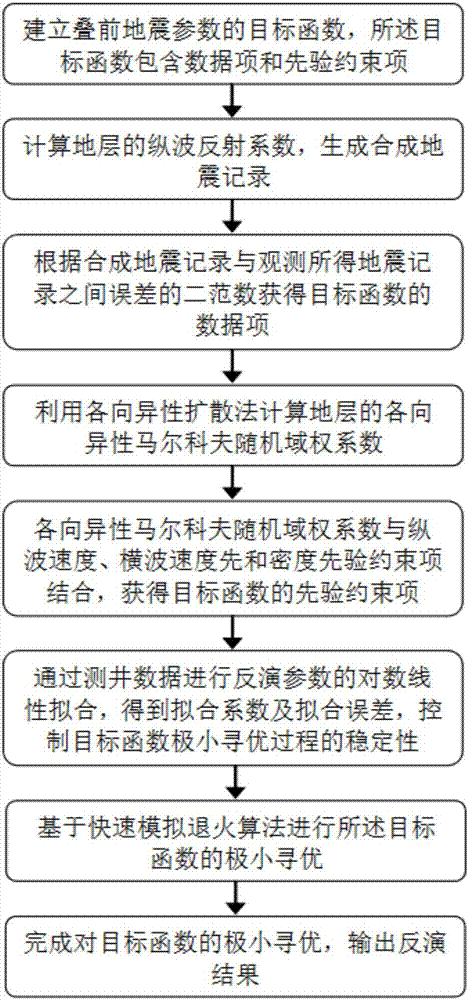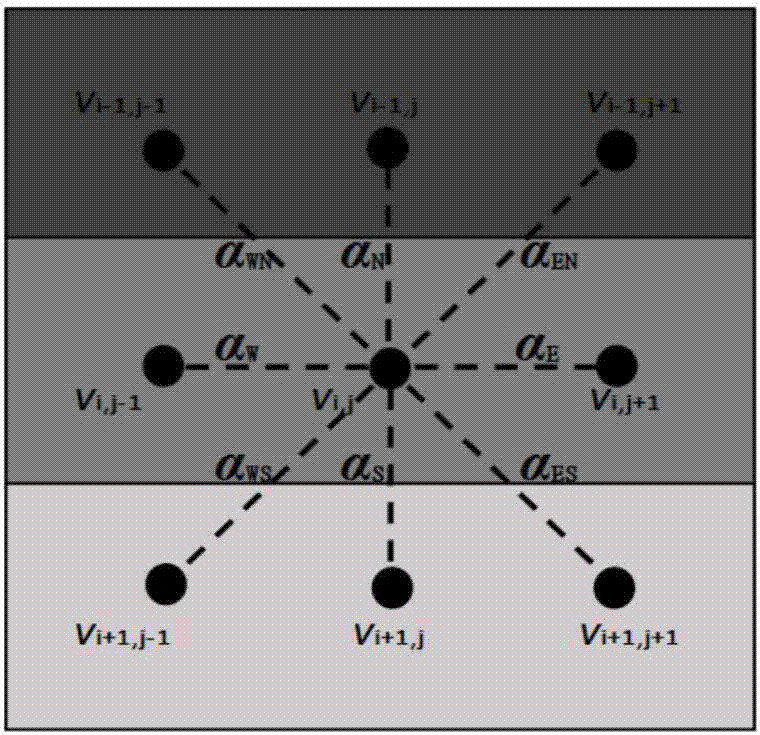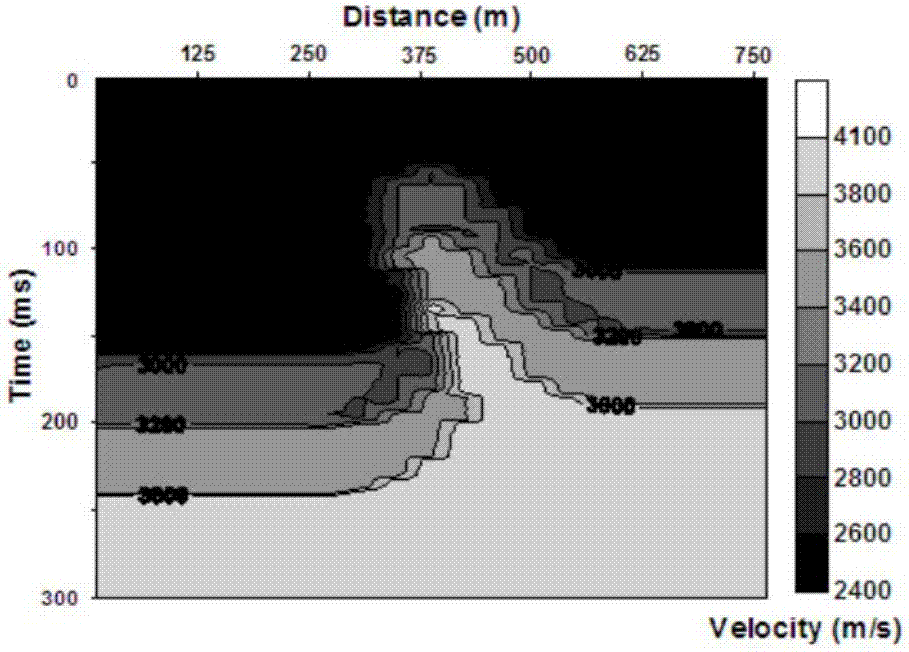Pre-stack seismic parameter inversion method based on anisotropic Markov random field
An anisotropic, pre-stack seismic technology, used in seismology, seismic signal processing, scientific instruments, etc., can solve problems such as instability, ignoring Markov random domain anisotropy characteristics, multi-parameter inversion nonlinearity, etc. , to achieve the effect of good protection
- Summary
- Abstract
- Description
- Claims
- Application Information
AI Technical Summary
Problems solved by technology
Method used
Image
Examples
example 1
[0076] Example 1, synthetic seismic data test:
[0077] Figure 3(a), Figure 3(b), and Figure 3(c) are the theoretical models for synthetic seismic data testing, which are three sets of parameter models of P-wave velocity, S-wave velocity and density.
[0078] The P-wave reflection coefficient of the theoretical model is solved by using the precise Zopritz equation, and then convolved with the zero-phase theoretical Ricker wavelet with a dominant frequency of 45 Hz to obtain the observed seismic records. The observed seismic records have 61 angle gathers, and each gather has 5 angle traces (the angle interval is 3°, and the angle coverage range is 0-15°).
[0079] Establish the data item of the objective function according to the formula (2). The initial model was forward-calculated using the exact Zopritz equation to obtain synthetic seismic records.
[0080] Calculate the weight coefficient of the anisotropic Markov random field according to formulas (3) and (4), use the P-...
example 2
[0087] Example 2, actual seismic data inversion:
[0088] In the actual seismic data, it is a two-dimensional arbitrary line of marine seismic data. There are 1981 angle gathers for this arbitrary line, each gather has 15 angle traces, the angle range is 3–45°, the angle interval is 3°, the trace spacing is 12.5m, and the time sampling rate is 2ms. Establish V using the parameter values of several major formations in the work area P and the initial model of density, ΔL S The initial model is 0.
[0089] The anisotropic Markov weight coefficient is calculated by using the layer velocity of the main strata in the work area. Other parameter settings are the same as Example 1.
[0090] Figure 6(a), Figure 6(b), and Figure 6(c) are the inversion results of actual seismic data, which are the inversion results of P-wave velocity, S-wave velocity and density-velocity respectively. It can be seen that the inversion results better reflect the layered characteristics of the format...
PUM
 Login to View More
Login to View More Abstract
Description
Claims
Application Information
 Login to View More
Login to View More - R&D
- Intellectual Property
- Life Sciences
- Materials
- Tech Scout
- Unparalleled Data Quality
- Higher Quality Content
- 60% Fewer Hallucinations
Browse by: Latest US Patents, China's latest patents, Technical Efficacy Thesaurus, Application Domain, Technology Topic, Popular Technical Reports.
© 2025 PatSnap. All rights reserved.Legal|Privacy policy|Modern Slavery Act Transparency Statement|Sitemap|About US| Contact US: help@patsnap.com



